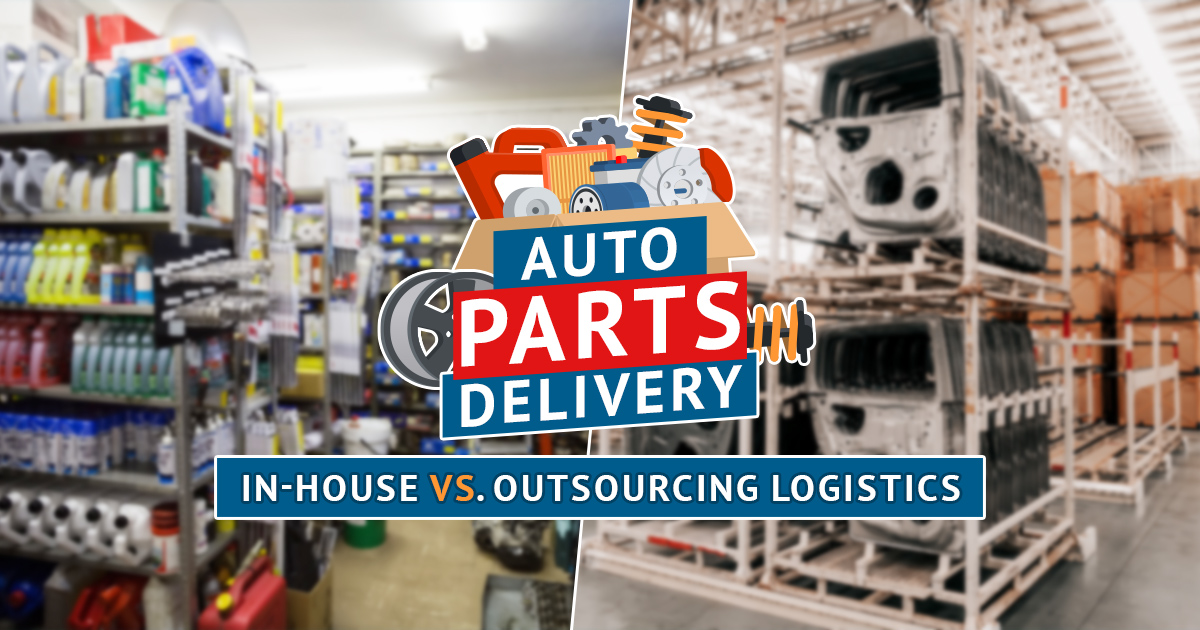
Businesses are always caught between managing delivery operations in-house or outsourcing them to third-party providers. Each approach has its own unique advantages and challenges, which need critical considerations for auto parts delivery. For example, weighing the benefits and drawbacks of in-house vs. outsourcing logistics. But first…
What are the Specific Logistics Needs of the Auto Parts Delivery?
The auto parts sector has unique logistics needs that are critical to maintaining seamless operations and high production standards. These needs include:
1. Just-in-Time Delivery
To save inventory costs and prevent manufacturing delays, auto parts manufacturers depend on exact scheduling for part and component deliveries. Logistics companies have to make sure that these supplies show there on time and without any problems.
2. Quality Assurance
These components must meet stringent quality standards. Logistics operations must include robust quality control measures to ensure that parts are handled and transported without damage, preserving their integrity and functionality.
3. Efficient Warehousing
The sector requires specialized warehousing solutions that can accommodate a wide variety of parts, from small electronic components to large body panels.
4. Reverse Logistics
Effective reverse logistics help reduce waste and optimize resource use.
5. Technology Integration
Technologies such as real-time tracking feature enhances transparency, improving efficiency by reducing the risk of errors in the supply chain.
6. Sustainability
Aside from sustainable logistics practices and slowly adapting to eco-vehicles, there is also the use of reusable packaging and efficient route planning to reduce carbon emissions.
By addressing these specific logistics needs, the auto parts delivery sector can ensure that its supply chain is resilient, efficient, and capable of supporting the industry’s continued growth and innovation.
Understanding the In-house vs. Outsourcing Logistics
Cost Efficiency
When it comes to cost efficiency,
- How does outsourcing logistics reduce costs?
Outsourcing logistics primarily aims to reduce costs, with 27% of companies using RPA achieving 10-20% cost savings. Third-party logistics providers (3PLs) offer businesses access to established delivery networks and technology, allowing for economies of scale that are often unachievable in-house. These providers typically spread their operational costs across multiple clients, which translates to lower per-unit costs for each client.
- What are the cost implications of maintaining in-house logistics?
In-house logistics can be more cost-effective in the long run by providing better control over operational expenses and critical tasks. The initial setup requires substantial capital investment in purchasing delivery vehicles, warehouse facilities, and delivery management software. These costs are compounded by the need to hire, train, and retain skilled personnel to manage and operate the logistics system.
Operational Control and Flexibility
When it comes to control and flexibility in its operations,
- What level of control does a company have with in-house logistics?
With in-house logistics, a company retains full control over every aspect of the delivery process. This control extends from managing the fleet and scheduling deliveries to handling customer interactions and ensuring the quality of service.
- How flexible is outsourcing logistics in adapting to market changes?
74% of logistics leaders plan to increase their logistics outsourcing budgets, highlighting the flexibility and adaptability of 3PL providers in the face of market changes. Third-party logistics providers (3PLs) are designed to quickly adapt on the changing market conditions and customer demands. Particularly beneficial in the auto parts industry, where demand have seen fluctuations based on factors such as vehicle recalls, seasonal changes, and market trends.
Auto Parts and Vehicle Expo 2024

What is the Auto Parts and Vehicle Expo 2024?
The Auto Parts and Vehicle Expo 2024 is an upcoming event showcasing the latest innovations and trends in the auto parts and vehicle industry. This will provide and open an excellent platform for partnerships, new learning about new technologies, and exploring business opportunities.
How can the Expo benefit logistics providers?
The Expo offers logistics providers insights into the latest advancements in delivery technologies, fleet management solutions, and supply chain optimization strategies, helping them stay competitive in the market.
SEE ALSO:
